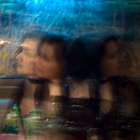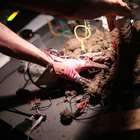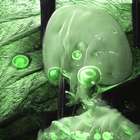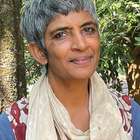Vegetal Culture
Posted Jan. 26, 2012 by Maja KuzmanovićRainforest Etiquette: learning from the rainforest
FoAM in Amsterdam organised and hosted a lecture by Suprabha Seshan on 16 October 2011. Suprabha is the spokesperson of the Gurukula Botanic Sanctuary in Kerala, India. At the rain forest sanctuary local tribal women are trained to become parataxonomists and ecosystem gardeners. Throughout more than twenty years of activity, Suprabha and her team have seen human pressure, demands and damage of the rain forest increase. She will address several topics focusing on the human relationship with the rain forest, including the failure of environmental education. In addition, Seshan will explain the approach of the Gurukula Botanic Sanctuary, attempting to increase the rain forest’s chances for survival. The lecture - designed for novice and experts alike - will be followed by a workshop that translates Suprabha’s knowledge to a European context; what would ecosystem gardening look like in Amsterdam and which micro-climates does the city offer?
- http://fo.am/rainforest_etiquette
- http://shibumifriends.posterous.com/
Resurrecting soil surface: Merapi Terraforming Project
FoAM member Angelo Vermeulen spent the summer with the lovely people of the House of Natural Fiber (HONF) in Indonesia terraforming Mount Merapi, the most active volcano in Indonesia, whose latest eruption occurred in October 2010. Typically, the biological regeneration of volcanic soil is very slow due to a complete absence of nitrogen. The Merapi Terraforming Project consists of a biological sculpture erected on the flanks of the volcano. In collaboration with the microbiology laboratory of Prof. Irfan D. Prijambada at Gadjah Mada University, rhizobia bacteria were used to try and grow different legume species as pioneering plants. These were grown in a 7-metre tall bamboo structure with a series of terraces. Additional plants from neighbouring areas that were unaffected by the volcano were also integrated.
The artwork functions both as a monument to the traumatic past of the location, and as an experiment in food production. It is explicitly inspired by the speculative concept of terraforming, and draws upon the imaginary of space colonisation. The project was developed in close collaboration with artists and students from Yogyakarta, and with the local population from the Merapi region. In September the first results of the project were presented during the History and Philosophy of Astrobiology conference on the island of Ven in Sweden. The Merapi Terraforming Project is part of Angelo’s wider artistic research platform Space Ecologies Art and Design (SEAD), which explores the architecture and ethics of space colonisation. http://url.ie/cp3p
- http://url.ie/d853
In touch with roots: plant communication and neurobiology
FoAM in Brussels invited biotechnologist Lionel Billiet to investigate plant communication from a scientific perspective. Lionel spent the wet month of August in literature research, uncovering stories and theories about communication systems inside the plant (signalling systems), between plants (chemical communication), and between plants and animals (different cases of “co-evolved syntaxes”). The literature research lead to the distillation of a few curious topics, among others plant neurobiology and the responsive growth of plant roots. Every tip of a plant's root system contains highly sensitive cellular mechanisms, measuring environmental parameters such as water availability, nutrient concentration or gravity. The root uses these signals to determine the direction and speed of its growth, allowing the root to “sniff its way” in a very animal-like fashion. If we consider root tips as decentralised decision centres in the plant, we can envisage surprising interactions with man-made systems, leading to possible games and stories. To test the ability of plant roots to grow in a simple labyrinthine pattern, Lionel devised an experimental setting in which he attempted to influence and monitor the plants’ growth. In the context of PARN and groWorld, Lionel’s research feeds the wider narrative with scientific stories and experiments, shedding light on the manifold ways in which plants communicate.
- http://lib.fo.am/parn_project_lionel
- http://lib.fo.am/plant_roots_experiment
- http://lib.fo.am/plant_neurobiology
Bees and power plants: an expedition to the north
FoAM members Christina Stadlbauer and Bartaku departed Brussels this summer to explore the Aronia fields of Latvia and the Green Arts of Halikonlahti. Christina created an installation inspired by experiments with honeybees, their sounds, smells and ways of living. The installation uses mainly wax as a concentrated medium to connect human senses with the world of insects. Bartaku exploded his archive on the powers of sun and plants in a Phoefarium, a temporary “lapidarium” of video, photos and objects designed and collected for his research project PhoEf: The Undisclosed Poésis of the Photovoltaic Effect. Bartaku also held a new Worklab, Temporary photoElectric Digestopians #7. Continuing his research into power plants, Bartaku conducted the Aronia Power Plantation Days of Initiation in Aizpute, Latvia. A collective harvest took place, alongside old and new forms of processing, eastern and western Aronia melanocarpa berry recipes, crafts and rituals. Christina and Bartaku ended their trip by talking about Aronia, bees, and vertical gardens at the Survival Kit festival in Riga, Latvia.
- http://halikonlahkti.net
- http://www.serde.lv/?q=node/18
- http://www.survivalkit.lv
- http://bit.ly/nG1TrC
Mycelium Radio: mushrooms calling...
Expanding the theme of human communication with non-human realms, FoAM in Brussels welcomed Martin Howse in December 2011 for an exploratory tutorial on mushrooms and their intricate mycelial networks. Mycelium, a fungal network of thread-like cells, represents a truly underground communications network, spreading out over vast areas of earth substrate, acting with ecosystem intelligence as an interface across across symbiotic networks, such as plant and tree roots. PARN’s Radio Mycelium workshop actively examined the cross-spore germination between two parallel wide area networks: radio-based communication technologies and the single organism network of the mycelium. The well-documented transformative potential of the mycelium (for example, decomposing pollutants) is invoked to remediate an increasingly pathogenic electromagnetic networked culture. A series of experimental situations were devised by participants, who also learned how to construct simple measurement devices, and culture shiitake, pink oyster and Enokitake mushrooms, and a variety of other simple moulds.
- http://fo.am/radio_mycelium
Created: 15 Jul 2021 / Updated: 15 Jul 2021












